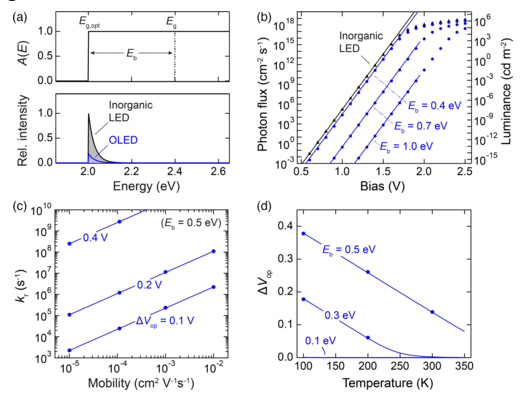Thermodynamic Limit for Excitonic Light-Emitting Diodes
Noel C. Giebink and Stephen R. Forrest
Phys. Rev. Lett. 130, 267002 – Published 29 June 2023
https://doi.org/10.1103/PhysRevLett.130.267002
The study establishes a thermodynamic limit for OLED efficiency, revealing that OLEDs require higher voltage for the same brightness compared to inorganic LEDs due to strong exciton binding. Optimizing factors like low exciton binding energy, long exciton lifetime, and efficient electron-hole recombination can minimize OLED overpotential, suggesting top-performing OLEDs may be near their efficiency limit. This framework aids in developing low-voltage OLEDs for displays and lighting.
How Setfos was used
Setfos was used to validate the theoretical model considering also exciton dissociation.

